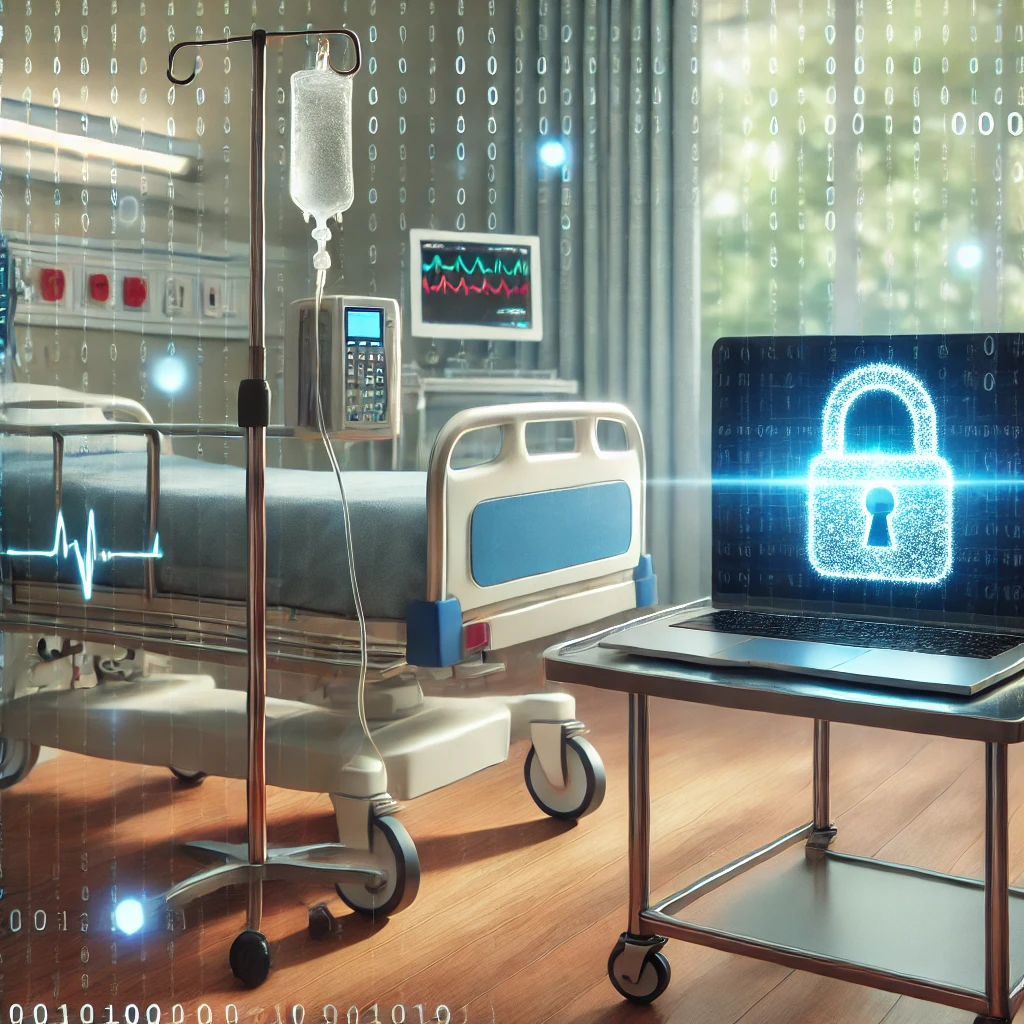
Cybersecurity for Healthcare Staff
About the course
Target group
Nurses, nursing assistants, medical administrative staff
Key words
Course introduction
The “Introductory Training Programme on Cybersecurity for Healthcare Staff” is designed to equip nurses, nursing assistants and medical administrative personnel with essential cybersecurity skills tailored to the healthcare sector. Comprising five modules, each 45 minutes in length, the course focuses on enhancing knowledge of data protection and cybersecurity practices within medical environments.
The first module introduces the fundamentals of cybersecurity, explaining the importance of safeguarding sensitive patient information and the various types of cyber threats, such as malware and phishing attacks. Module two delves into the General Data Protection Regulation (GDPR), covering its relevance in healthcare, key compliance principles and the proper handling of personal data. The third module emphasises password management and best practices, including two-factor authentication, email security and safe internet browsing. Module four addresses mobile device security, teaching participants how to manage the risks associated with using mobile devices for work, and the importance of securing personal and professional data. The final module focuses on incident response, outlining how to recognise signs of a cyber-attack, isolate affected devices and follow appropriate reporting procedures.
Delivered through engaging multimedia content, quizzes and reflection sessions, this up-skilling programme ensures participants gain practical knowledge. The course is ideal for healthcare workers at EQF levels 3-5 who seek to stay informed about cybersecurity and safeguard sensitive healthcare information.
Details to know

Downloadable certificate
Share your certificate on Linkedin

Assessment
10 Quizzes

Taught in English
Also available in 6 other languages (IT, NO, DE, EL, BG, RO)
Learning outcomes
Module 1
- Competence
- Is able to use the general concept of cybersecurity to protect patient data in their daily work
- Knowledge:
- Understands the general concept of cyber security and its importance in the healthcare industry
- Skills:
- Identifies the most common forms of cyber threats such as malware (viruses, worms, and Trojans), social engineering (phishing, pretexting), ransomware
- Acts to present the most common forms of cyber threats when working with patient data and other types of sensitive information
Module 2
- Competence:
- Is able to understand, explain and use the purpose and key principles of the GDPR and how it relates to their work with sensitive data
- Knowledge:
- Has a general understanding of the purpose and key principles of the GDPR, its connection to cybersecurity and its implication for their work
- Understands the rights and responsibilities related to their handling and protecting of patient data under the GDPR
- Knows the content of the requirements for healthcare organisations when handling and protecting patient data (informed consent, right to access, rectify and erase data)
- Skills:
- Follows the requirements for healthcare organisations when collecting, storing and sharing patient data
Module 3
- Competence:
- Is able to practice safe password management and safe use of emails to protect themselves against cyber threats.
- Knowledge:
- Understands the importance of strong passwords and its role in securing sensitive information
- Knows the most central best practices for creating strong passwords, the importance of two-factor authentication and the most common authentication pitfalls
- Has a general and superficial understanding of additional security measures such as multi-factor authentication and password managers
- Skills:
- Practices safe password management at work by creating strong and unique passwords and avoids common password pitfalls
- Verifies sender email addresses when receiving emails and identifies phishing attacks
- Follows safe browsing practices such as using secure websites when at work and when using equipment from work
Module 4
- Competence:
- Is able to use mobile devices in a work setting while minimising the most common cybersecurity threats
- Knowledge:
- Understands the importance of implementing security measures for mobile devices, including encryption and device passcodes Avoids using public Wi-Fi networks when using work-related devices and working on work-related tasks and uses reliable VPNs (Virtual private network) instead
- Skills:
- Does not share personal information related to their digital identity to anyone
- Uses data encryption software
- Avoids potential vulnerabilities when using mobile devices for work-related tasks
Module 5
- Competence:
- Is able to recognise and explain to others the most common signs of cyber-attacks (slow internet, unexpected error messages)
- Knowledge:
- Understands the importance of reporting security incidents and knows how to do so
- Knows the most important consequences of failing to report security incidents
- Skills:
- Follows the correct procedures when responding and reporting a cyber-attack
- Isolates infected devices
- Acts responsibly when preserving data by doing data backups and cooperating with IT professionals
Introduction to cybersecurity and threats
Lessons
Introduction 1. Introduction to the concept of cybersecurity 2. Types of threats / Types of attackers ReferencesGDPR for healthcare workers
Lessons
Introduction 1. Purpose of the GDPR 2. Related Principles ReferencesPasswords and security measures
Lessons
Introduction 1. Password Management 2. Introduction to Email Security ReferencesMobile device security
Lessons
Introduction 1. Security Risks 2. Securing mobile devices ReferencesIncidence response
Lessons
Introduction 1. Signs of a cyber-attack 2. General reporting procedures References Course Evaluation
Co-funded by the Erasmus+ programme of the European Union under Grant Agreement number 101056563.

Co-funded by the European Union. Views and opinions expressed are however those of the author(s) only and do not necessarily reflect those of the European Union or EACEA. Neither the European Union nor the granting authority can be held responsible for them.
